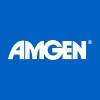
TCRαβ-depleted Progenitor Cell Graft With Additional Memory T-cell DLI, Plus Selected Use of Blinatumomab,...
Acute Lymphoblastic Leukemia (ALL)Acute Myeloid Leukemia (AML)6 morePatients less than or equal to 21 years old with high-risk hematologic malignancies who would likely benefit from allogeneic hematopoietic cell transplantation (HCT). Patients with a suitable HLA matched sibling or unrelated donor identified will be eligible for participation ONLY if the donor is not available in the necessary time. The purpose of the study is to learn more about the effects (good and bad) of transplanting blood cells donated by a family member, and that have been modified in a laboratory to remove the type of T cells known to cause graft-vs.-host disease, to children and young adults with a high risk cancer that is in remission but is at high risk of relapse. This study will give donor cells that have been TCRαβ-depleted. The TCR (T-cell receptor) is a molecule that is found only on T cells. These T-cell receptors are made up of two proteins that are linked together. About 95% of all T-cells have a TCR that is composed of an alpha protein linked to a beta protein, and these will be removed. This leaves only the T cells that have a TCR made up of a gamma protein linked to a delta protein. This donor cell infusion will be followed by an additional infusion of donor memory cells (CD45RA-depleted) after donor cell engraftment. This study will be testing the safety and effects of the chemotherapy and the donor blood cell infusions on the transplant recipient's disease and overall survival.

A Study of Subcutaneous Blinatumomab Administration in Acute Lymphoblastic Leukemia (ALL) Patients...
B Cell Precursor Acute Lymphoblastic LeukemiaThe study aims to evaluate the safety, efficacy, and tolerability of subcutaneous (SC) blinatumomab for treatment of Acute Lymphoblastic Leukemia (ALL), to determine the maximum tolerated dose (MTD), and recommended phase 2 dose(s) (RP2D) of SC administered blinatumomab. It will also conduct a clinical PK evaluation of SC1 and SC2 blinatumomab formulations.

CD38-targeted Chimeric Antigen Receptor T Cell (CART) in Relapesd or Refractory Acute Myeloid Leukemia...
Acute Myeloid LeukemiaThis is a single center, open-label phase 1/2 study to evaluate the safety and efficacy of targeted CD38 chimeric antigen receptor engineered T cell immunotherapy (CART) in the treatment of CD38 positive relapsed or refractory acute myeloid leukemia.

Study of Efficacy and Safety of Flumatinib Combined With Chemotherapy in Ph Positive ALL
Acute Lymphocytic LeukemiaAdult B-Cell1 morePhiladelphia chromosome (BCR-ABL1, Ph) is the most common genetic abnormality in acute lymphoblastic leukemia (ALL) and an independent prognostic risk factor. With the increase of age, the incidence of patients over 60 years old can reach 50%, whose 5-year overall survival rate was less than 20%. With the application of tyrosine kinase inhibitor (TKI), the prognosis of Ph positive ALL patients is greatly improved. At present, TKI combined with chemotherapy has become the first-line treatment recommended in the guideline of Ph positive ALL patients. However, with the use of imatinib, more and more patients develop drug resistant to imatinib. In addition, the clinical data showed that the MRD negative rate in patients treated with imatinib combined with hyper CVAD was only 22% three months later, which was far lower than 31% of the second generation TKI and 52% of the third generation TKI. Second generation TKI dasatinib and nilotinib can overcome most imatinib resistant kinase region mutations. However, patients with severe hemocytopenia, infection or other complications are often unable to tolerate the standard chemotherapy. In addition, due to the high cost, some patients can't afford the long-term use. Flumatinib is the first approved second generation TKI in China and a derivative of imatinib. Compared with imatinib, it introduced trifluoromethyl, substituted pyridine ring for benzene ring, and kept the direction of amide bond, which made the inhibitory effect of flumatinib on common kinase mutations significantly better than that of imatinib. In addition, compared with the second-generation TKI recommended in the first line of current guidelines, the incidence of quality of life related adverse reactions of flumatinib is lower, and no specific adverse reactions of the second-generation TKI have been reported. We plan to enroll 28 patients with Ph positive ALL. All patients are diagnosed by morphology, immunology, cytogenetics and molecular biology (MICM). According to subjects' age, we will divide them into two groups. Subjects aged 60 years or older are received flumatinib and dose-adjusted VDCP or prednisone regimen. Subjects younger than 60 years are received flumatinib and hyper-CVAD regimen. MRD are examined on the 8th, 15th and 29th day after chemotherapy. Then, MRD will be monitored in the third, 6th, 9th, 12th, 15th, 18th, 21th and 24th months after chemotherapy to evaluate the effect.

Immunogenicity of an Anti-pneumococcal Combined Vaccination in Acute Leukemia or Lymphoma
VaccineStreptococcus Pneumoniae3 moreThe French Public Health Council recommended pneumococcal vaccination combined strategy for all immunocompromised patients in 2012. This strategy consisted in conjugated 13-valent pneumococcal injection followed 2 months later by polysaccharide 23-valent vaccine injection. General practitioners are usually in charge of this vaccination. Conjugated pneumococcal vaccine enhances the immunogenicity of the polysaccharide vaccine. Acute leukemia and lymphoma are treated with multiple courses of chemotherapy, impairing the immune system and potentially the response to vaccination. These patients are more at risk for developing pneumococcal invasive diseases than the general population. However, efficacy of pneumococcal vaccination is poorly documented in this setting. We assume that 70% of the patients are non-responders to vaccination, according to their anti-pneumococcal immunoglobulin G titers and the opsonophagocytic activity. To assess the immunogenicity of the pneumococcal vaccination combined strategy in adult population of acute leukemia and lymphoma, the investigator will measure anti-pneumococcal serotype-specific immunoglobulin G titers and opsonophagocytic activity at different time-points after completion of the combined vaccine strategy. The primary objective is to assess the immunogenicity of pneumococcal vaccination combined strategy at 3 months after the 13-valent pneumococcal injection (corresponding to 1 month after the end of the combined strategy) using immunoglobulin G titers and opsonophagocytic activity. At different time points (day 0, 1 month after the 13-valent pneumococcal injection, the day of the injection of the polysaccharide 23-valent vaccine, one month after the injection of the polysaccharide 23-valent vaccine, 3-6 months after the polysaccharide 23-valent vaccine,9-12 months after the polysaccharide 23-valent vaccine), the immunological response to vaccination will be monitored using specific-serotype immunoglobulin G titers, opsonophagocytic activity, and total anti-pneumococcal Immunoglobulin. The investigator will determine predictive factors of non-response to vaccination by comparing demographic data, biological data and treatment received by both acute myeloblastic leukemia and lymphoma patients. The tolerance and safety of the vaccination strategy will also be assessed in this specific hematological population.

CPX-351 and Ivosidenib for the Treatment of IDH1 Mutated Acute Myeloid Leukemia or High-Risk Myelodysplastic...
Acute Myeloid Leukemia With Gene MutationsMyelodysplastic Syndrome3 moreThis phase II trial investigates how well CPX-351 and ivosidenib work in treating patients with acute myeloid leukemia or high-risk myelodysplastic syndrome that has IDH1 mutation. The safety of this drug combination will also be studied. IDH1 is a type of genetic mutation (change). Chemotherapy drugs, such as CPX-351, work in different ways to stop the growth of cancer cells, either by killing the cells, by stopping them from dividing, or by stopping them from spreading. Ivosidenib may stop the growth of cancer cells by blocking some of the enzymes needed for cell growth. The purpose of this trial is to learn if CPX-351 in combination with ivosidenib can help to control IDH1-mutated acute myeloid leukemia or high-risk myelodysplastic syndrome.

A Study of Ponatinib With Chemotherapy in Children, Teenagers, and Adults With Philadelphia Chromosome-Positive...
Pediatric Philadelphia Chromosome-positive Acute Lymphoblastic Leukemia (Ph+ALL)Ph+ Mixed Phenotype Acute Leukemia (MPAL)1 moreThis study is about an anticancer drug called ponatinib which is a tyrosine kinase inhibitor given with chemotherapy to children, teenagers, and young adults up to 21 years of age with Philadelphia Chromosome-Positive Acute Lymphoblastic Leukemia who have relapsed or are resistant to other treatment. The main aims of this study are to confirm the highest dose of ponatinib tablets and minitablet capsules that can be given to participants with acceptable side effects, and to evaluate if participant's leukemia achieves remission. Participants will take ponatinib tablets with chemotherapy. For participants who cannot swallow tablets or who are receiving less than a 10 mg dose, a capsule with small ponatinib minitablets inside will be provided. Participants will take ponatinib for 10 weeks in combination with chemotherapy (reinduction and consolidation blocks) and will be followed up for at least 3 years.

Treatment Study for Children and Adolescents With Acute Promyelocytic Leukemia
Acute Promyelocytic LeukemiaThe trial is open to all patients with a diagnosis of acute promyelocytic leukemia (APL) who are PCR-positive for the PML-RARα transcript and less than 18 years of age.

CD19-CAR_Lenti T Cells in Pediatric Patients Affected by Relapsed/Refractory CD19+ ALL and DLBCL...
Acute Lymphoblastic LeukemiaDiffuse Large B Cell Lymphoma1 moreThis study aims at evaluating the feasibility and safety of the administration of autologous T cells that have been modified through the introduction of a chimeric antigen receptor targeting the B-cell surface antigen CD19, following administration of lymphodepleting chemotherapy regimen, in children and adults with relapsed/refractory B-cell acute lymphoblastic leukemia (B- ALL) or aggressive B-cell Non-Hodgkin lymphoma (B-NHL). The phase II extension is aimed at testing the efficacy of the treatment at the optimal dose defined in the phase I. In addition, the investigators hypothesize that it is feasible to successfully manufacture CAR T cells to meet the established release criteria at a maximum target dose of 3.0 x 10^6 cells/kilogram recipient total body weight in this patient population using the Miltenyi CliniMACS Prodigy® closed transduction system.

A Modified Dose of Rabbit Anti-thymocyte Globulin (rATG) in Children and Adults Receiving Treatment...
Acute Myeloid Leukemia (AML)Acute Lymphoid Leukemia (ALL)1 moreThe purpose of this study is to see if conditioning regimens that include personalized rabbit ATG (P-rATG) help the immune system recover sooner and decrease the chances of transplant-related side effects. Participants in this study will be children and adults who have acute leukemia or myelodysplastic syndrome (MDS), and will receive a standard conditioning regimen to prepare the body for an allogeneic hematopoietic cell transplant (allo-HCT). The conditioning regimen will include r-ATG, one of two combinations of chemotherapy, and possibly total body irradiation (TBI).
